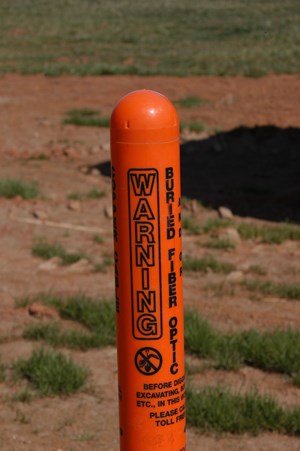Report: Fiber broadband is “paramount” to achieving zero carbon footprint
(UI) – The Fiber Broadband Association’s Sustainability Working Group published a new white paper focused on analyzing carbon footprints of Fiber-to-the-Home (FTTH) versus Hybrid Fiber Coaxial (HFC) data over cable system interface specification (DOCSIS) 4.0 networks.

The paper, titled “Fiber Broadband Networks are Far More Sustainable Than Hybrid Fiber Coax Networks,” reveals the carbon footprint of FTTH networks is lower than HFC networks on every sustainability metric, from embodied carbon to carbon in the operational phases, including customer premise equipment (CPE).
“There are many reasons that service providers are choosing fiber broadband networks. Fiber offers the best performance, reliability, longevity, and sustainability as this paper proves today,” said Mike Emmendorfer, FBA Sustainability Working Group Chair and Calix VP of Technology.
“Our research confirms that fiber networks offer significant carbon footprint advantages over HFC networks, from manufacturing of the components, through installation and operation of the network. Service providers that choose fiber will wisely invest in a valuable, sustainable solution that will improve the communities they connect for decades.”
The sustainability white paper examines the carbon footprint (embodied carbon) of FTTH and HFC networks in four specific life cycle stages, and the findings are unequivocal:
- The carbon footprint associated with the manufacturing of network infrastructure components and systems is 60% less in FTTH networks compared to HFC. The carbon footprint for 1km of distribution cable was measured at 883 kg CO2e in an FTTH network and 2,408 kg CO2e in an HFC network.
- The carbon footprint associated with network infrastructure deployment and buildout is 7% less in FTTH networks compared to HFC. During installation of an all-fiber network is estimated to generate approximately 15.8 kg of CO2e for each home compared to the estimated 17kg of CO2e when installing an HFC network.
- The carbon footprint associated with network operational use (electricity) is up to 96% less in FTTH networks compared to HFC. FTTH XGS-PON OLT network technology measured 0.42 – 0.83 annual kg CO2e per home passed, compared to 11.38 – 11.53 annual kg CO2e per home in an HFC network. Furthermore, a typical XGS-PON ONT is responsible for 43.84 kilograms of CO2e annually, in contrast to 53.33 kilograms from a DOCSIS 4.0 cable modem, resulting in a 17.8% decrease in carbon footprint for the XGS-PON ONT.
- There are better opportunities to reduce carbon footprint associated with network infrastructure and equipment removal and recycling when existing legacy networks are overbuilt with fiber. When replacing copper or coaxial networks with fiber, the legacy cabling and equipment can be recovered and recycled. Efficient recycling of fiber cabling is still relatively new and requires further development to become cost effective at scale.
Communications service providers (CSPs) seeking to improve sustainability metrics associated with their broadband deployments will find that overbuilding an HFC plant with fiber will initially cause an incremental increase in carbon footprint — but after converting customers to fiber, the annual reduction in operational carbon will provide a carbon break-even in six years.
With fiber’s ability to scale to nearly unlimited bandwidth speeds, transitioning networks from HFC to fiber provides a far more sustainable option now and for decades to come. CSPs consider many factors when overbuilding an existing network with fiber, and the reduction in electricity consumption and overall carbon footprint are additional considerations.
Related News
From Archive

- Glenfarne Alaska LNG targets late-2026 construction start for 807-mile pipeline project
- U.S. water reuse boom to fuel $47 billion in infrastructure spending through 2035
- $2.3 billion approved to construct 236-mile Texas-to-Gulf gas pipeline
- Major water pipe break in Puerto Rico hits over 165,000 customers
- Potomac River Tunnel project enters construction phase beneath Washington, D.C.
- Pennsylvania American Water launches interactive map to identify, replace lead water service lines
- Trump's tariffs drive $33 million cost increase for Cincinnati sewer project
- Utah city launches historic $70 million tunnel project using box jacking under active rail line
- Tulsa residents warned after sewer lines damaged by boring work
- Fatal trench collapse halts sewer construction in Massachusetts; two workers hospitalized



Comments